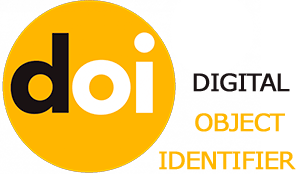Pharmaceutical development and standardization of Salvia stepposa tablets
DOI:
https://doi.org/10.31489/2025feb3/79-88Keywords:
Salvia stepposa, microwave-assisted extraction, rosmarinic acid, phenolic compounds, HPLC-MS/MS, phytopharmaceuticalsAbstract
In response to the growing threat of antimicrobial resistance, plant-derived compounds are increasingly being explored as safe and effective alternatives to conventional antibiotics. This study focused on the development of solid oral dosage forms based on a dry extract of Salvia stepposa (MVSHS-40), rich in phenolic acids and flavonoids with proven antimicrobial and anti-inflammatory activity. The extract was obtained using microwave-assisted extraction (MAE) with 40% ethanol, yielding up to 6% rosmarinic acid as the dominant bioactive compound, along with caffeic and p-coumaric acids, and flavonoids such as apigenin, naringenin, and luteolin. The tablets were formulated by direct compression using microcrystalline cellulose, EMDEX, citric acid, and calcium stearate, with some variants incorporating essential oils. Out of more than 30 experimental variants, five optimized compositions were selected. Physicochemical and pharmacopeial evaluations confirmed excellent disintegration times (<12 minutes), dissolution rates (>79%), uniform mass, high mechanical strength (≥107 N), and minimal friability (≥99.99%). HPLC-UV/MS analysis quantified 3.046 mg of rosmarinic acid per tablet. Comparative analysis revealed a 5.5-fold increase in active content over commercial Salvia officinalis tablets while avoiding thujone-related safety concerns. Stability studies over 18 months demonstrated sustained integrity of pharmacological properties. The resulting MVSHS-40 tablets meet all quality specifications and represent a safe, stable, and effective herbal formulation with potential applications in the prevention and treatment of upper respiratory tract infections.
References
Drożdżyński, P., Rutkowska, N., Rodziewicz, M., & Marchut-Mikołajczyk, O. (2024). Bioactive Compounds Produced by Endophytic Bacteria and Their Plant Hosts—An Insight into the World of Chosen Herbaceous Ruderal Plants in Central Europe. Molecules, 29(18), 4456. https://doi.org/10.3390/molecules29184456
Levaya, Y., Atazhanova, G., Gabe, V., & Badekova, K. (2025). A Review of Botany, Phytochemistry, and Biological Activities of Eight Salvia Species Widespread in Kazakhstan. Molecules, 30(5), 1142. https://doi.org/10.3390/molecules30051142
Levaya, Y.K., Atazhanova, G.A., Kacergius, T., Ivasenko, S.A., Marchenko, A.B., Ishmuratova, M.Yu. & Smagulov, M.K. (2023). Salvia dumetorum essential oil: GC-MS analysis, antibacterial activity and effect on the formation of Streptococcus mutans biofilms. Natural Product Research, https://doi.org/10.1080/14786419.2023.2256019
Levaya, Y. K., Zholdasbaev, M. E., Atazhanova, G. A., Akhmetova, S. B., & Ishmuratova, M. Y. (2021). Antibacterial activity of ultrasonic extracts of Salvia stepposa growing in Kazakhstan. Bulletin of Karaganda University. Biology. Medicine. Geography Series, 1, 45–49. https://doi.org/10.31489/2021bmg1/45-49
Janczura, M., Sip, S., & Cielecka-Piontek, J. (2022). The Development of Innovative Dosage Forms of the Fixed-Dose Combination of Active Pharmaceutical Ingredients. Pharmaceutics, 14(4), 834. https://doi.org/10.3390/pharmaceutics14040834
Levaya, Y.K., Erkenuly, Z.M., Abdulkhakimovna, A.G., & Boltabaevna, A.S. (2022). Evaluation of Antibacterial Activity of Salvia stepposa Extracts Isolated using Microwave Extraction, Growing Wild in Kazakhstan . Trends in Sciences, 19(7), 3217. https://doi.org/10.48048/tis.2022.3217
Ivasenko, S., Orazbayeva, P., Skalicka-Wozniak, K., Ludwiczuk, A., Marchenko, A., Ishmuratova, M., Poleszak, E., Korona-Glowniak, I., Akhmetova, S., Karilkhan, I., & Loseva, I. (2021). Antimicrobial activity of ultrasonic extracts of two chemotypes of Thymus serpyllum L. of Central Kazakhstan and their polyphenolic profiles. Open Access Macedonian Journal of Medical Sciences, 9(A), 61–67. https://doi.org/10.3889/oamjms.2021.5719
Eurasian Economic Commission. (2020). Pharmacopoeia of the Eurasian Economic Union: Volume I (Approved by the Decision of the Board of the EEC No. 100, August 11, 2020). Moscow: Eurasian Economic Commission.
Ministry of Health of the Republic of Kazakhstan. (2008). The State Pharmacopoeia of the Republic of Kazakhstan (Vol. 1, pp. 58–59). Almaty, Kazakhstan: Zhybel Zholy. (In Russian).


